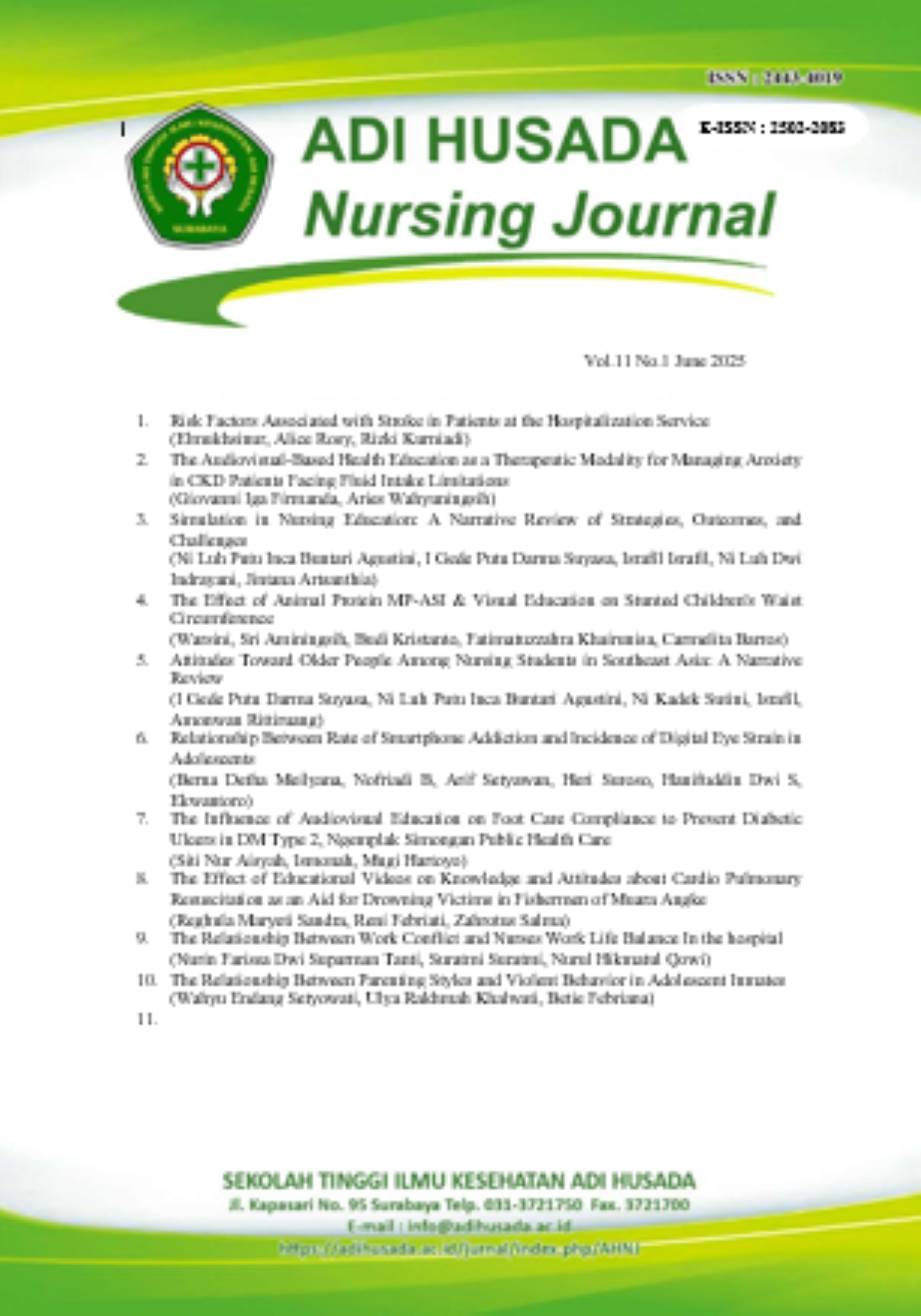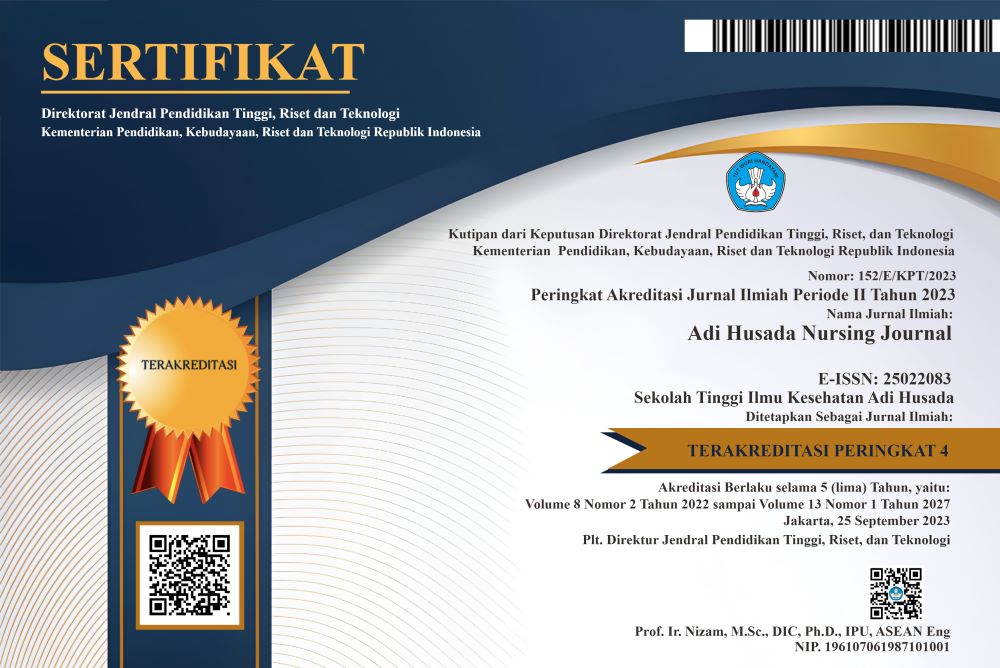Simulation in Nursing Education: A Narrative Review of Strategies, Outcomes, and Challenges
Abstract
Simulation-based education is a vital component of modern nursing education, providing a safe, controlled environment for students to develop clinical competencies. It bridges the gap between theory and practice by fostering experiential learning, critical thinking, and decision-making. This narrative review explores simulation strategies in nursing education, assesses educational outcomes, and identifies implementation challenges. A literature search was conducted in PubMed, Scopus, CINAHL, and ScienceDirect for articles published between 2020 and 2025. Studies discussing simulation strategies, outcomes, and barriers in undergraduate nursing education were included. Common simulation methods include high-fidelity manikins, standardized patients, virtual simulations, and hybrid models. These approaches enhance clinical skills, communication, teamwork, confidence, and knowledge retention. Simulation also supports reflective practice and safe error correction. However, barriers such as high costs, limited faculty expertise, time constraints, and inconsistent evaluation methods persist. Simulation enhances learning outcomes in nursing education but requires strategic integration, adequate resources, and faculty training. Addressing these challenges can maximize its impact and better prepare students for clinical practice. The outcome of this review highlights that well-implemented simulation strategies significantly improve nursing students’ clinical competence, critical thinking, and readiness for real-world healthcare environments, ultimately contributing to safer and higher-quality patient care.
References
Agustini, N. L. P. I. B., Budiarsana, I. P., Artawan, I. K., & Dewi, N. P. A. R. (2024). Influence of High-Fidelity Manikin-Based Simulation on Nursing Students' Basic Cardiac Life Support Ability and Motivation. Babali Nursing Research, 5(2), 334-345. https://doi.org/https://doi.org/10.37363/bnr.2024.52364
Akpan, E. E. (2024). Healthcare Applications of Augmented Reality. Creating Immersive Learning Experiences Through Virtual Reality (VR), 201. https://doi.org/https://doi.org./10.4018/979-8-3693-6407-9.ch010
Al-Ansi, A. M., Jaboob, M., Garad, A., & Al-Ansi, A. (2023). Analyzing augmented reality (AR) and virtual reality (VR) recent development in education. Social Sciences & Humanities Open, 8(1), 100532. https://doi.org/https://doi.org/10.1016/j.ssaho.2023.100532
Alinier, G., & Oriot, D. (2022). Simulation-based education: deceiving learners with good intent. Advances in Simulation, 7(1), 8. https://doi.org/https://doi.org/10.1186/s41077-022-00206-3
Alrashidi, N., Pasay an, E., Alrashedi, M. S., Alqarni, A. S., Gonzales, F., Bassuni, E. M., Pangket, P., Estadilla, L., Benjamin, L. S., & Ahmed, K. E. (2023). Effects of simulation in improving the self-confidence of student nurses in clinical practice: a systematic review. BMC Medical Education, 23(1), 815.
Altmiller, G., & Pepe, L. H. (2022). Influence of technology in supporting quality and safety in nursing education. The Nursing Clinics of North America, 57(4), 551.
Basak, T., Unver, V., Moss, J., Watts, P., & Gaioso, V. (2016). Beginning and advanced students’ perceptions of the use of low-and high-fidelity mannequins in nursing simulation. Nurse Education Today, 36, 37-43. https://doi.org/https://doi.org/10.1016/j.nedt.2015.07.020
Bassuni, E. M., Pangket, P., Estadilla, L., Benjamin, L. S., & Ahmed, K. E. (2023). Effects of simulation in improving the self-confidence of student nurses in clinical practice: a systematic review.
Bonfert, M., Muender, T., McMahan, R. P., Steinicke, F., Bowman, D., Malaka, R., & Döring, T. (2024). The interaction fidelity model: A taxonomy to communicate the different aspects of fidelity in virtual reality. International Journal of Human–Computer Interaction, 1-33. https://doi.org/https://doi.org/10.1080/10447318.2024.2400377
Booth, R. G., Strudwick, G., McBride, S., O’Connor, S., & López, A. L. S. (2021). How the nursing profession should adapt for a digital future. bmj, 373. https://doi.org/https://doi.org/10.1136/bmj.n1190
Calhoun, A., Pian-Smith, M., Shah, A., Levine, A., Gaba, D., DeMaria, S., Goldberg, A., & Meyer, E. C. (2020). Exploring the boundaries of deception in simulation: a mixed-methods study. Clinical Simulation in Nursing, 40, 7-16. https://doi.org/https://doi.org/10.1016/j.ecns.2019.12.004
Cavaleri, R., Withington, A., Chalmers, K. J., & Blackstock, F. (2023). The influence of stress on student performance during simulation-based learning: a pilot randomized trial. ATS scholar, 4(4), 474-489.
Chemikova, O., Heitzmann, N., Stadler, M., Holzberger, D., Seidel, T., & Fischer, F. (2020). Simulation-based learning in higher education. Review of Educational Review(4). https://doi.org/https://doi.org/10.3102/0034654320933544
Chen, F.-Q., Leng, Y.-F., Ge, J.-F., Wang, D.-W., Li, C., Chen, B., & Sun, Z.-L. (2020). Effectiveness of virtual reality in nursing education: meta-analysis. Journal of medical Internet research, 22(9), e18290. https://doi.org/https://doi.org/10.2196/18290
Guerrero, J. G., Rosales, N. S., & Castro, G. M. T. (2023). Impact of high‐fidelity simulation exposure of nursing students with their objective structured clinical examination: A quasi‐experimental study. Nursing Open, 10(2), 765-772. https://doi.org/https://doi.org/10.1002/nop2.1343
INACSL Standards Committee. (2021). Healthcare simulation standards of best PracticeTM facilitation. Clinical Simulation in Nursing, 58, 22-26. https://doi.org/https://doi.org/10.1016/j.ecns.2021.08.010.
Isaksson, J., Krabbe, J., & Ramklint, M. (2022). Medical students’ experiences of working with simulated patients in challenging communication training. Advances in Simulation, 7(1), 32. https://doi.org/https://doi.org/10.1186/s41077-022-00230-3
Koukourikos, K., Tsaloglidou, A., Kourkouta, L., Papathanasiou, I. V., Iliadis, C., Fratzana, A., & Panagiotou, A. (2021). Simulation in clinical nursing education. Acta Informatica Medica, 29(1), 15.
Macnamara, A. F., Bird, K., Rigby, A., Sathyapalan, T., & Hepburn, D. (2021). High-fidelity simulation and virtual reality: an evaluation of medical students’ experiences. BMJ simulation & technology enhanced learning, 7(6), 528. https://doi.org/https://doi.org/10.1136/bmjstel-2020-000625
Madsgaard, A., Smith‐Strøm, H., Hunskår, I., & Røykenes, K. (2022). A rollercoaster of emotions: An integrative review of emotions and its impact on health professional students' learning in simulation‐based education. Nursing Open, 9(1), 108-121.
Magi, C. E., Bambi, S., Iovino, P., El Aoufy, K., Amato, C., Balestri, C., Rasero, L., & Longobucco, Y. (2023). Virtual reality and augmented reality training in disaster medicine courses for students in nursing: a scoping review of adoptable tools. Behavioral Sciences, 13(7), 616. https://doi.org/https://doi.org/10.3390/bs13070616
Marzi, G., Balzano, M., Caputo, A., & Pellegrini, M. M. (2025). Guidelines for Bibliometric‐Systematic Literature Reviews: 10 steps to combine analysis, synthesis and theory development. International Journal of Management Reviews, 27(1), 81-103. https://doi.org/https://doi.org/10.1111/ijmr.12381
Mendez, K. J., Piasecki, R. J., Hudson, K., Renda, S., Mollenkopf, N., Nettles, B. S., & Han, H.-R. (2020). Virtual and augmented reality: Implications for the future of nursing education. In (Vol. 93, pp. 104531): Elsevier.
Olorunfemi, O., & Akinyemi, T. A. (2024). Science and practice of nursing: The impact of technology. Digital Medicine, 10(3), e24-00003. https://doi.org/https://doi.org/10.1097/DM-2024-00003
Papanagnou, D., Klein, M. R., Zhang, X. C., Cameron, K. A., Doty, A., McCarthy, D. M., Rising, K. L., & Salzman, D. H. (2021). Developing standardized patient-based cases for communication training: lessons learned from training residents to communicate diagnostic uncertainty. Advances in Simulation, 6, 1-11. https://doi.org/https://doi.org/10.1186/s41077-021-00176-y
Parveen, D., & Ramzan, S. I. (2024). The role of digital technologies in education: benefits and challenges. Int. Res. J. Adv. Eng. Manag, 2, 2029-2037. https://doi.org/ https://doi.org/10.47392/IRJAEM.2024.0299
Poo, M. C.-P., Lau, Y.-y., & Chen, Q. (2023). Are virtual laboratories and remote laboratories enhancing the quality of sustainability education? Education Sciences, 13(11), 1110.
Qin, Y., & Chaimongkol, N. (2021). Simulation with standardized patients designed as interventions to develop nursing students’ cultural competence: a systematic review. Journal of Transcultural Nursing, 32(6), 778-789. https://doi.org/https://doi.org/10.1177/10436596211023968
Rafiq, S., Iqbal, S., & Afzal, A. (2024). The impact of digital tools and online learning platforms on higher education learning outcomes. Al-Mahdi research journal (MRJ), 5(4), 359-369. https://doi.org/https://ojs.mrj.com.pk/index.php/MRJ/article/view/342
Reierson, I. Å., Ravik, M., Blomberg, K., Bjørk, I. T., Bölenius, K., Vesterager Stenholt, B., & Husebø, S. E. (2024). Comparing didactic approaches for practical skills learning in Scandinavian nursing simulation centres: A qualitative comparative study. Journal of Advanced Nursing, 80(12), 5003-5017. https://doi.org/https://doi.org/10.1111/jan.16150
Sałacińska, I., Trojnar, P., Gebriné, K. É., Törő, V., Sárváry, A., & Więch, P. (2025). A comparative study of traditional high-fidelity (manikin-based) simulation and virtual high-fidelity simulations concerning their effectiveness and perception. Frontiers in Medicine, 12, 1523768. https://doi.org/https://doi.org/10.3389/fmed.2025.1523768
Scott, R., Monaghan, E., Chebsey, D., Meighan-Davies, S., & Gebbett, C. (2024). Simulation-based education at level 4: The role of multidisciplinary team input in the design and facilitation of a simulated radiographic placement. Radiography, 30, 158-165.
Stephan, J. C., Kanbar, A., Saleh, N., & Alinier, G. (2023). The effect of deception in simulation-based education in healthcare: a systematic review and meta-analysis. International Journal of Healthcare Simulation, 1-14. https://doi.org/https://ijohs.com/article/doi/10.54531/HWXL4351
Ton, D. N. M., Duong, T. T. K., Tran, H. T., Nguyen, T. T. T., Mai, H. B., Nguyen, P. T. A., Ho, B. D., & Ho, T. T. T. (2024). Effects of Standardized Patient Simulation and Mobile Applications on Nursing Students’ Clinical Competence, Self-Efficacy, and Cultural Competence: A Quasi-Experimental Study. International Journal of Environmental Research and Public Health, 21(4), 515. https://doi.org/https://doi.org/10.3390/ijerph21040515
Keywords
Challenges in Simulation, Clinical Competency, Experiential Learning, Nursing Education, Simulation-Based Learning

This work is licensed under a Creative Commons Attribution 4.0 International License.








